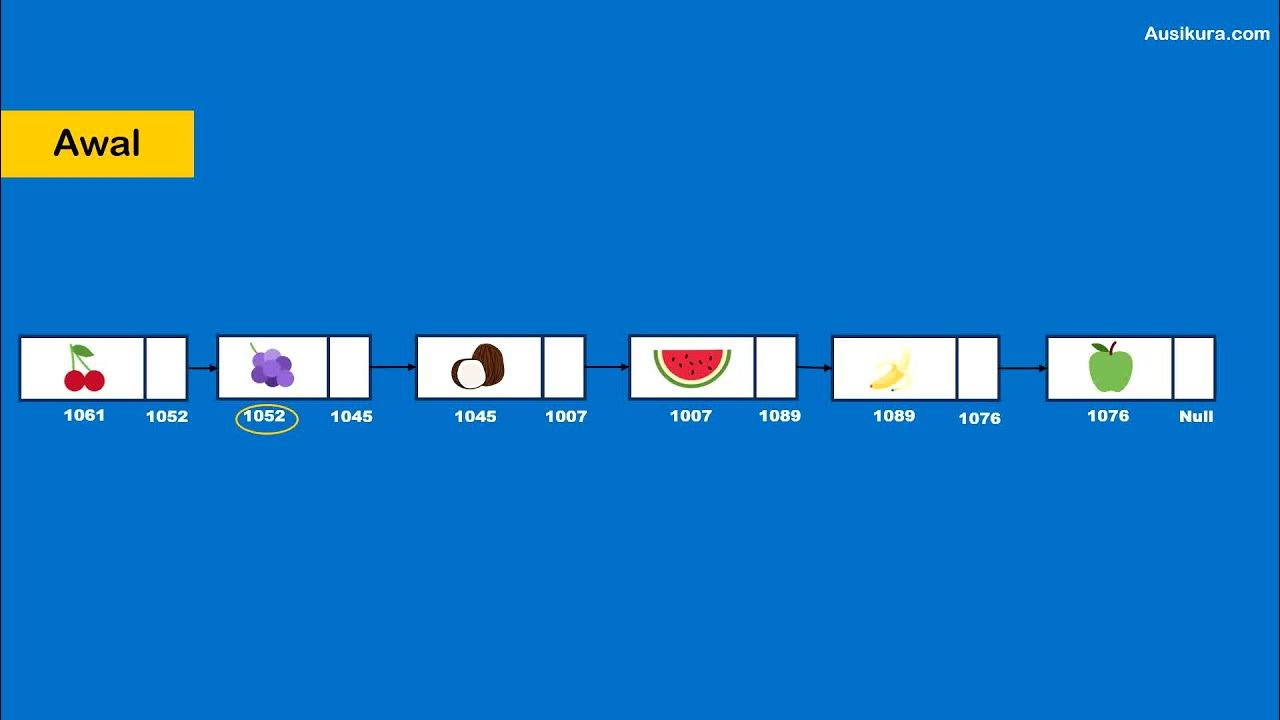Data Structures in Python: Doubly Linked Lists -- Append and Prepend
Summary
TLDRIn this video, the instructor introduces the concept of doubly linked lists, building on prior knowledge of singly and circular linked lists. The video explains the structure of a doubly linked list, where each node has a 'previous' and 'next' pointer, and walks through implementing this structure in Python. The focus is on creating functions to append and prepend elements to the list, with detailed explanations of how to handle both empty and non-empty lists. The instructor also demonstrates how to print the list to verify the functions work correctly.
Takeaways
- 😀 A doubly linked list is a data structure where each node has a 'next' and a 'previous' pointer, making it different from singly and circular linked lists.
- 😀 In a doubly linked list, the 'head' node's 'previous' pointer is null, unlike the 'next' pointer of the last node which is also null.
- 😀 A Node class in Python for a doubly linked list contains three components: data, next, and previous, initialized to 'None'.
- 😀 The doubly linked list class begins with a 'head' node set to 'None', indicating an empty list initially.
- 😀 The 'append' function adds elements to the end of the doubly linked list and handles both empty and non-empty lists differently.
- 😀 In an empty list, the new node becomes the head of the list, and its 'previous' pointer is set to 'None'.
- 😀 In a non-empty list, to append a new node, we traverse to the last node, adjust its 'next' pointer to point to the new node, and set the new node's 'previous' pointer to the last node.
- 😀 The 'print list' function traverses the list from head to tail, printing each node's data as it moves through the 'next' pointers.
- 😀 The 'prepend' function adds elements to the front of the doubly linked list, adjusting both 'next' and 'previous' pointers for the new node and the head node.
- 😀 In the prepend function, if the list is empty, the new node becomes the head, with its 'previous' pointer set to 'None'. If there are existing nodes, the new node is inserted before the current head, and the head pointer is updated.
Q & A
What is the main difference between a doubly linked list and a singly linked list?
-In a doubly linked list, each node has two pointers: one pointing to the next node and the other pointing to the previous node. In contrast, a singly linked list only has a pointer to the next node.
What is the role of the 'previous' pointer in a doubly linked list?
-The 'previous' pointer in a doubly linked list points to the node before the current node, allowing traversal of the list in both directions.
How does the head node's 'previous' pointer behave in a doubly linked list?
-The 'previous' pointer of the head node is null, which distinguishes it from the 'next' pointer of the last node, which is also null in a doubly linked list.
In Python, what are the three components of a node in a doubly linked list?
-Each node in a doubly linked list has three components: the 'data' (the value stored in the node), the 'next' pointer (pointing to the next node), and the 'previous' pointer (pointing to the previous node).
How does the 'append' function work in a doubly linked list?
-The 'append' function creates a new node and adds it to the end of the list. If the list is empty, the new node becomes the head. If the list already has nodes, the 'next' pointer of the last node is updated to point to the new node, and the new node's 'previous' pointer points back to the last node.
What happens if we try to append an element to an empty doubly linked list?
-If the list is empty, the 'append' function creates the new node, sets its 'previous' pointer to null, and assigns this new node as the head of the list.
In the 'prepend' function, what happens when the list is empty?
-When the list is empty, the 'prepend' function behaves similarly to 'append.' It creates the new node, sets its 'previous' pointer to null, and assigns the new node as the head of the list.
How does the 'prepend' function work when there are existing nodes in the list?
-When there are nodes in the list, the 'prepend' function creates a new node, updates the 'previous' pointer of the current head node to point to the new node, and sets the 'next' pointer of the new node to point to the current head. Then, the new node becomes the new head of the list.
Why is it important to update the 'previous' pointer when adding or removing nodes in a doubly linked list?
-Updating the 'previous' pointer is crucial for proper bidirectional traversal of the list. Without it, you wouldn't be able to efficiently traverse the list backwards.
What is the purpose of the 'print list' function in the context of this doubly linked list implementation?
-The 'print list' function is used to verify that nodes have been correctly appended or prepended to the list. It traverses the list from the head node, printing the data of each node until it reaches the end of the list (where the 'next' pointer is null).
Outlines

This section is available to paid users only. Please upgrade to access this part.
Upgrade NowMindmap

This section is available to paid users only. Please upgrade to access this part.
Upgrade NowKeywords

This section is available to paid users only. Please upgrade to access this part.
Upgrade NowHighlights

This section is available to paid users only. Please upgrade to access this part.
Upgrade NowTranscripts

This section is available to paid users only. Please upgrade to access this part.
Upgrade NowBrowse More Related Video
5.0 / 5 (0 votes)





